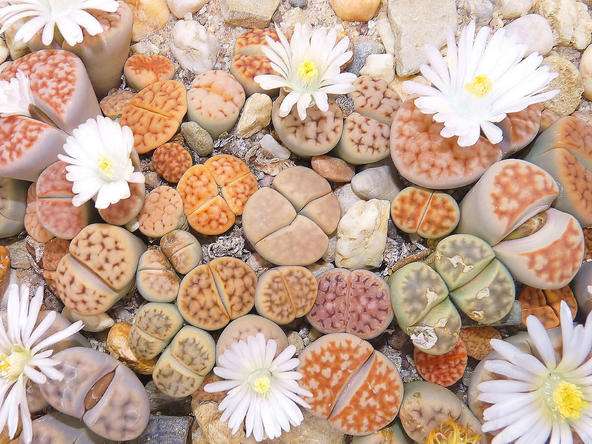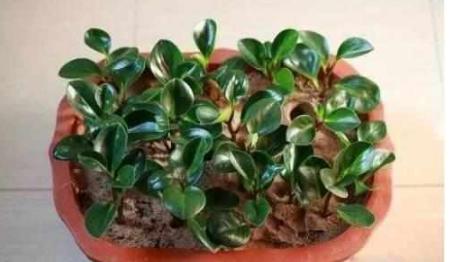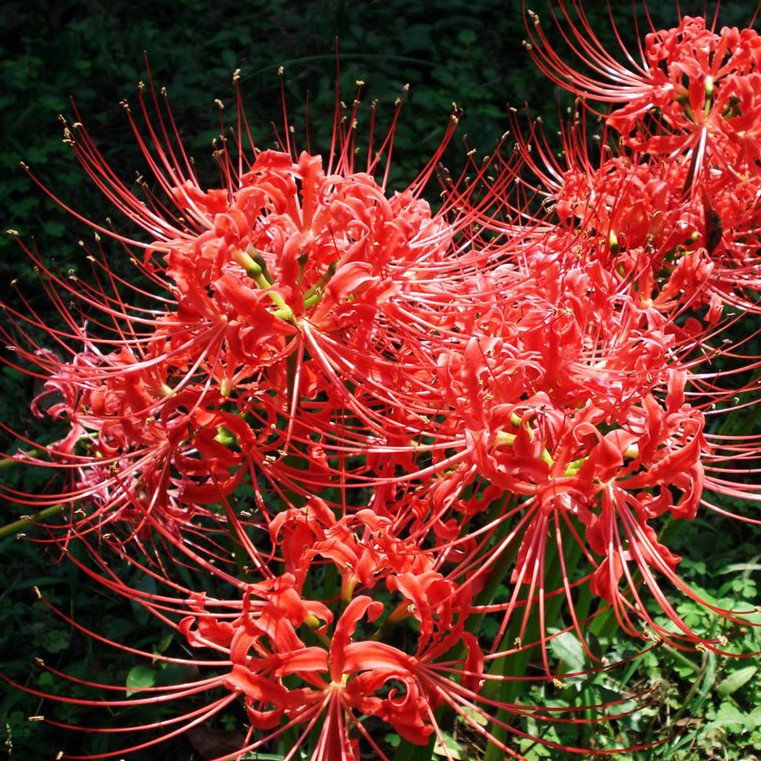The culture method of tortoise back bamboo formaldehyde air purification plant selected tortoise back bamboo
With loose, drained and ventilated imported peat of Pinnell 5-40mm specification, break the peat and mix well with water. (standard of adding water: after mixing well, hold a handful of peat tightly and the water seeps from the fingers) to be planted in a cup.
Potted bamboo plants usually use rotten leaf soil, garden soil and river sand as the substrate. When planting, add a small amount of bone meal and dried cow dung as base fertilizer. It likes to be moist, needs sufficient moisture during its growth, and must always keep the basin soil moist; when the weather is dry, it must also spray water to the leaves to keep the air moist, so as to facilitate the growth of branches and leaves and bright leaves. The amount of water can be gradually reduced in autumn and winter. Tortoise back bamboo is a kind of flower that likes fertilizer. In order to make it grow vigorously, thin liquid fertilizer is applied twice a month from April to September. If it is fat, the leaf color is pleasant. Pay attention to shade in the growing season, avoid strong light, especially in summer can not be placed in the sun, otherwise it is easy to cause leaf scorch, burns, affecting the ornamental value. Brown spot disease sometimes occurs in the leaves of tortoise back bamboo, which should be prevented and treated in time, such as topiramate or carbendazim, so as not to spread the disease.

It is easy to cultivate bamboo on the back of turtles. In order to shorten the growth cycle and improve the ornamental effect, attention should be paid to the following points in maintenance:
I'm afraid of strong light exposure. Tortoise back bamboo is a typical shade-tolerant plant, large-scale production must be equipped with shading facilities, can use 50% shading net, especially sowing seedlings and just cutting into live seedlings, avoid direct sunlight, so as to avoid leaf burns. The molded plants should also pay attention to shading in the middle of summer, otherwise the leaves will age and lack of natural luster, which will affect the ornamental value.
Afraid of dry air. Tortoise back bamboo grows naturally in the tropical rain forest and likes to be moist, but the potting soil will also rot the roots, make the plant stop growing, the leaves droop, lose luster, and the leaves are uneven. Watering should grasp the principle of rather wet than dry, often keep the basin soil wet, but not stagnant water, watering every 2-3 days in spring and autumn. In the midsummer season, in addition to watering every day, water should be sprayed many times to keep the leaves fresh, and hanging cultivation should be sprayed more frequently. In winter, the evaporation of leaves is weakened, and the amount of watering water is reduced.
Apply thin fertilizer frequently. Phyllostachys pubescens is a more fertilizer-tolerant foliage plant, in order to make more new leaves, green leaves with natural luster, fertilizer is applied once a month during the growing period, be careful not to let the fertilizer liquid stain the leaves. At the same time, the root of tortoise back bamboo is relatively tender, do not apply raw fertilizer and thick fertilizer, so as not to burn roots. It is best to use "Huiyou" 20-8-20 with high potassium nitrate fertilizer and 20-20-20 general fertilizer in the four seasons, which is more beneficial to the growth of tortoise back bamboo.
Need to be ligated and reshaped. Phyllostachys pubescens is a large foliage plant with large thick stems and leaves, especially when the ramets of adult plants should be framed and tied to avoid lodging. The bracket is removed after it is finalized. At the same time, when the leaves of the stem nodes grow too dense and the branches grow too long, pay attention to the pruning of the whole plant and strive for natural beauty.
Northern reproduction
Tortoise back bamboo, native to the tropical rain forest, is a perennial vine evergreen flower, which is difficult to blossom and bear fruit in the north, so it can only be propagated by cutting vines. Cutting vines should choose those that grow well. A plant with more than 5 leaves.
Vine cutting time
Because the tortoise back bamboo is a flower that likes dampness and high temperature, so July-August is its peak growing season. The survival rate of vine cutting is the highest during this period. However, the plants that cut vines and propagate during this period will stop growing due to the arrival of autumn and will not be able to provide ornamental plants if they can grow only 1 Mel and 2 leaves after development. Therefore, in the case of skilled vine cutting, it can also be advanced to the end of May.
Vine cutting operation
The watering should be stopped one or two days before cutting the vine, and the basin soil is slightly dry to facilitate the operation. When cutting the vine, first hit the turtle on the back of the bamboo, and then gently peel off the root soil with your hand, and clean up the entangled roots one by one. At this time, the number of cutting vines and the location of the incision can be determined according to the development of the main vine and the strength of the root system. Generally speaking, the female parent after cutting the vine should retain at least 3 leaves, otherwise the growth is not easy to recover. The diameter of the main vine is about 4 cm and can be cut in a single section, while the weaker plants can be cut in 2-3 nodes. In addition, it should be noted that there is only one bud eye on each main vine of the tortoise back bamboo, which is characterized by slightly protruding on the surface of the vine stem. If you accidentally drop the incision on the bud eye, this section of the vine stem can no longer sprout. After the above factors are taken into consideration, the old leaves on the vine stem that will be cut off can be cut off first in order to induce new buds more quickly, and then cut the main vine horizontally with a sharp knife. The notch should avoid the root system, bud eye and close to the petiole. Cut off the short stem, can be put into a pre-prepared basin, the size of the basin should be determined according to the number of roots, not too big or too small.
The bottom of the flowerpot should first put a layer of coarse sand to facilitate drainage, and then add rotten leaf soil or ordinary land, no need to add base fertilizer. Then lie the cut short stem across the basin and fill the soil to completely bury the root system, just to expose the short stem. Gently press the soil with your hands, water it thoroughly, and place it in a medium light position. Water properly every few days. After about a month, cracks will appear in the position of the bud eye, and new buds will gradually grow.
Potted plant management
In pot culture, 3 parts of rotten leaves, 3 parts of compost and 4 parts of river sand were mixed to form culture soil. When changing the basin and soil every spring, mature organic fertilizer or phosphorus and potassium fertilizer are added into the basin as base fertilizer. The growing season must be often watered, watering should grasp the principle that it would rather be wet than dry, keep the basin soil moist, and spray water to the leaves frequently in summer to maintain high air humidity. The winter temperature should not be lower than 10 ℃ to prevent the cold wind from blowing, otherwise the leaves are easy to wither and yellow and fall off. Winter basin soil should be dry, slightly moist, too wet and easy to rot roots and leaves. Spray the branches and leaves with the same or similar water as room temperature every 3-5 days to remove indoor dust pollution and keep the plants fresh and bright. From May to September, dilute liquid fertilizer was applied every 2 weeks or so, foliar fertilizer was applied during the peak growth period, and 0.1% urea solution or 0.2% potassium dihydrogen phosphate solution was better. Little or no fertilizer should be applied during overwintering.
For a long time, the moisture should be sufficient, and the culture soil should be kept moist every 2-3 days; when the weather is dry, water should be sprayed to the leaves to keep the air moist and master the watering principle that it is better to be wet than dry, so as to facilitate the growth of branches and leaves and bright leaves. The amount of water can be gradually reduced in autumn and winter. Excessive watering causes rotten roots, but it is still necessary to maintain moist air and spray water to the leaves every 7-10 days to keep the plants and leaves fresh and evergreen. Tortoise back bamboo is more fond of fertilizer. In order to make it grow vigorously, dilute liquid fertilizer is applied twice a month from April to September. Pay attention to shading in the growing season, semi-overcast is better, avoid strong light, especially in midsummer can not be placed in the sun, otherwise it is easy to cause leaf scorch and burn, affecting the ornamental value. Tortoise back bamboo planting for 2-3 years, the stem is too high, up to more than 1.5 meters, but can not stand upright, can be inserted bamboo pole support, anti-lodging. Large potted plant with a 1.3-1.5 meter wooden stick, inserted in the basin, planted on the tortoise back bamboo, a lodging prevention, two attached columns to grow luxuriantly. Or cut the stem too high to propagate and let the mother plant sprout new stems and leaves again. It should be kept indoors above 10 ℃ in winter, but keep the temperature above 5 ℃ at least, otherwise the leaves will freeze and scorch, and the basin soil should be dry. Brown spot and anthracnose often occur during the growing period of tortoise back bamboo, which can be controlled by spraying 1000 times of 50% thiophanate and 75% chlorothalonil, or 1000 times of carbendazim. Poor ventilation in summer and winter, shell insects and Noctuidae larvae often absorb juice and eat tender leaves on the back of the stem, which can be caught or brushed manually, preferably with 1500 times of omethoate emulsion or 2000 times of isocarbophos EC, or 1500 times of 40% fumigation EC.
Summer and autumn maintenance
In autumn, as the sun is strong and the temperature is dry and hot, potted turtle back bamboo should be placed in a cool and ventilated place. At the same time of reasonable shading, spray more water on the leaf surface, play the effect of humidifying and cooling, and keep the leaf surface bright and bright, adding cool meaning to the interior. Due to frequent watering and spraying in summer, the basin soil is easy to harden and reduce acidity. In order to prevent physiological yellowing of tortoise back bamboo and lead to iron deficiency chlorosis, a small amount of ferrous sulfate can be added at the same time of watering. The concentration is about 0.5 color 1.0% to achieve the purpose of improving the acidity of the basin soil and replenishing the iron nutrition of the plant. In order to make the bamboo survive the winter safely, a small amount of potassium chloride or potassium carbonate can be applied at the end of autumn to increase the concentration of plant cell fluid and enhance its cold resistance so that it can survive the severe winter safely. The method to restrain its growth is to control watering and fertilizing, and to change watering to foliar spraying; a clean and hygienic metal cone thorn can be selected to interspersed the basal stem node of the tortoise back bamboo, destroying part of its transport tissue and preventing the transport of some nutrients, so that the plant shape is neat and compact, the stem is short, the stem is dense, the handle is short, and the leaves are beautiful.
Time: 2019-04-22 Click:
- Prev

A plant can reproduce with a single leaf.
Today, the editors of the encyclopedia of plants introduce several kinds of potted plants to you. We only need a leaf to make them grow into a big pot. If you don't believe in it, you can go home and try it. You can use it very much and save money to buy potted plants. At the same time, you can also enjoy the fun of producing potted plants by ourselves. Potted Douban green
- Next

Bulbous bulbous plant-how to plant and maintain garlic flower
Lycoris radiata (Latin name: Lycorisradiata (L'Her.) Herb.) belongs to the genus Lycoris of Lycoris. Bulb subglobose, 1-3 cm in diam. Autumn leaves, narrowly banded, ca. 15 cm long, ca. 0.5 cm wide, tip obtuse, dark green
Related
- Fuxing push coffee new agricultural production and marketing class: lack of small-scale processing plants
- Jujube rice field leisure farm deep ploughing Yilan for five years to create a space for organic food and play
- Nongyu Farm-A trial of organic papaya for brave women with advanced technology
- Four points for attention in the prevention and control of diseases and insect pests of edible fungi
- How to add nutrient solution to Edible Fungi
- Is there any good way to control edible fungus mites?
- Open Inoculation Technology of Edible Fungi
- Is there any clever way to use fertilizer for edible fungus in winter?
- What agents are used to kill the pathogens of edible fungi in the mushroom shed?
- Rapid drying of Edible Fungi

